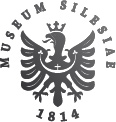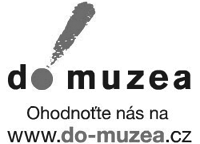Slezský sborník
rok 2016
ročník 114
číslo 2
Obsah / Contents
Studie / Articles
Karolína KIRSCHNEROVÁ: Fojtská privilegia hukvaldského panství mezi kontinuitou a změnou (13. – 16. století)
s. 5–25
Vogt's Privileges in the Hukvaldy Domain between Continuity and Change (13th – 16th century)
The study seeks to highlight in brief the first part of the less known aspects Vogt's privileges, which affected mainly the economic status of free Vogts. The second and essential part of the study is devoted to the continuity of the Vogt's office in the Hukvaldy Domain; this part focuses on the development of the privileges and their change in the period from the 13th to 16th century, more specifically until the end of the Episcopate of Stanislav I Thurz in 1540. The information obtained from the Hukvaldy Domain is further compared with the Vogt's privileges in the Kelecky and Svitavy Domain, which also belonged to the estates of the Olomouc bishops.
Martin JEMELKA: „Sešli jsme se jako křesťané": Počátky lidového spiritismu ve Slezsku do jeho institucionalizace v letech 1914–1919
s. 27–45
„We encountered as Christians": The origins of popular spiritism in Silesia until its institutionalization in the years between 1914 and 1919
The study is devoted to the significant phenomenon of religious, social and cultural history of Western and Central Europe from the mid-19th to the mid-20th centuries, to spiritism and the spiritistic movement in its popular form, spread in decades around 1900 in the lower social classes. One of the most important centres of spiritism in the Czech Lands and Central Europe was, from the beginning of the 20th century, Teschen Silesia headed by the municipalities of Silesian Ostrava and Radvanice in Silesia, where there was opened the first spiritist house in the Austro-Hungarian Empire belonging to the Building Society Brotherhood (1914). The text attempting to map Silesian spiritism in its constitutive phase prior to the definitive establishment of the Spiritist Society Brotherhood (1919) is devoted to popular spiritism in the workers' and metal-farmers' communities between today's Ostrava and Karvina. In the text, spiritism is presented as a specific form of esoteric Christianity in the international and domestic chronological and ideological coordinates. By analyzing the available sources, the rise of spiritism in the years around 1900 is reconstructed as well as its religious practice and development in the regional centres, led by the community in Silesian-Ostrava Zarubek. Attention is paid to the process of institutionalizing the spiritistic movement, in which the more intellectual and ambitious forms of scientistic spiritism prevailed over esoteric Christianity. At the end of the study, the issue of the possible specificities of the Silesian popular spiritism and the causes of its mass expansion in the ranks of industrial workers in the Ostrava industrial area is raised. The aim of the study is to present popular spiritism as a specific form of religious life of the lower classes that were not only passive recipients of institutionalized forms of religion with a codified doctrine, but they themselves were partakers in the pluralistic religious life of the European society of the commencing 20th century.
Ivana KOLÁŘOVÁ: Převzetí důstojníků německé národnosti československým četnictvem na příkladu Zemského četnického velitelství pro Slezsko
s. 47–56
Adoption of German Comissioned Officers by Czechoslovak Gendarmery on Example of Gendarmery Command for Silesia
The article describes several cases of German-speaking commissioned officers of gendarmery in Silesia during the first years of Czechoslovak independence. Through the particular cases the text analyses both the approach of the former Austro-Hungarian officers to the new state and the attitude of republican authorities to the ex-monarchist officers of German origins.
Aleš KREMPL – Zdeněk JIRÁSEK: Průběh osídlování Bruntálska a Krnovska v letech 1948–1960
s. 57–79
Settlement of Bruntál and Krnov districts in 1948–1960
The study deals with migration movements and population changes in the frontier of the Czech lands from 1948 to 1960, focusing on the districts of Bruntál and Krnov then. The essential part of the study is the period of the second half of the 1950s, when the so-called final settlement was taking place in Czechoslovakia, and it is therefore possible to speak about the state-initiated and controlled form of final settlement. The work is based on archival sources of national and regional provenance, by means of which it aims to illustrate, on selected examples, the specifics of this process in the local part of the border region.
Daniela MATROZSOVÁ: Domy pionýrů a mládeže Ostravského kraje 50. a 60. let ve světle pramenů
s. 81–95
Houses of the Pioneers and the Youth in the Ostrava Region in 1950s and 1960s in the light of archival sources
This study focuses on the issue of Houses of the Pioneers and the Youth in the area of the "Small" Ostrava Region from 1950 to 1968 and executes it from the perspective of archival sources. The first part of the study is devoted to the general outline of the development of the Houses of the Pioneers and the Youth and their organization, followed by an analysis of the regional network of the Houses of the Pioneers and the Youth and the activities conducted in the Houses of the Pioneers and the Youth.
Recenze a zprávy o literatuře / Reviews and Brief Notices (s. 97–105)
Kronika / Chronicle (s. 107–112)
Bibliografická příloha / Bibliography (s. 115–117)
Poslední aktualizace článku: 21.09.2017
Vytisknout celý článek







